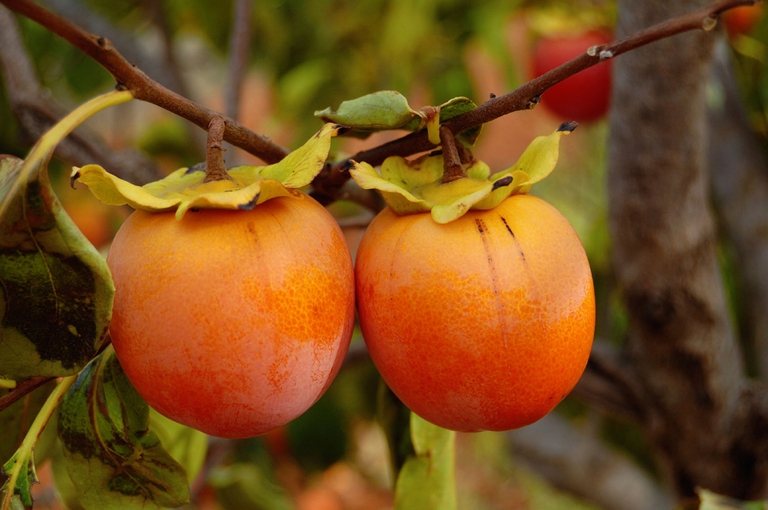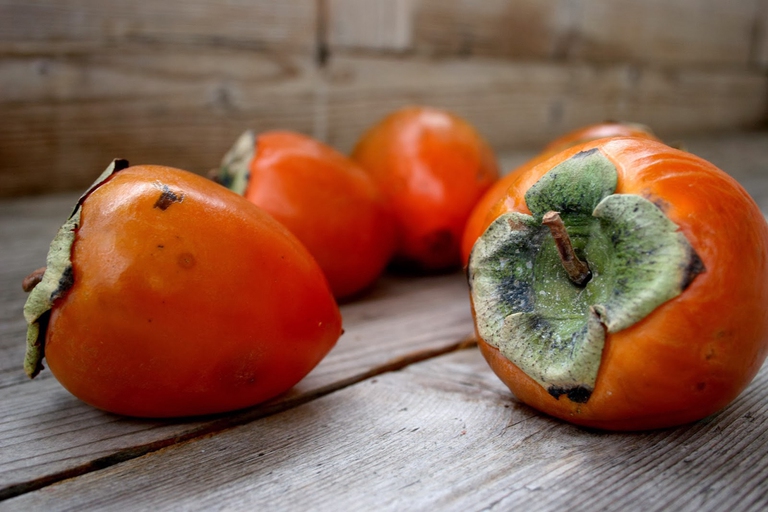Energetic and rich in vitamins, persimmons should be consumed when soft. Clean them well, cut into halves and taste the pulp by spooning it out.
When trees lose leaves, it’s time for persimmons. This easy-to-grow fruit tree was exported to Europe in the 19th century, probably due to the spread of railways. No matter how you prune it, it will endure, no matter if you neglect it, it will bear many fruits. In the 19th century, there was always room for persimmons in the cellars: they were gathered still unripen and stored with apples (the ethylene contained in the apples speeds up the ripening process). This is a way to avoid making your mouth pucker because of tannin, which is precious for your health (it boosts digestion and it’s astringent) but set your teeth on edge. As more time passes since the fruit is picked, the less the content of tannins.
![cachi-albero]()
Maybe this is the reason why nowadays people eat less and less persimmons: we’re no more accustomed to think that food needs time to ripen and be eaten.
![cachi-maturi]()
There are many varietals of this fruit including vanilla persimmons that can be consumed as soon as you pick them because their harder and tastier pulp doesn’t set your teeth on edge.
Persimons are a great source of vitamin A, are high in vitamin C and mineral salts. They are rich in sugars and tannins, that’s why they’re energetic, they reinvigorate the nervous system and the liver, they’re excellent antibacterial fruits in case of gastroenteritis.
Translated by Francesca Clemente
Siamo anche su WhatsApp.
Segui il canale ufficiale LifeGate per restare aggiornata, aggiornato sulle ultime notizie e sulle nostre attività.

Quest'opera è distribuita con Licenza Creative Commons Attribuzione - Non commerciale - Non opere derivate 4.0 Internazionale.











